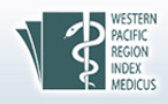Abstract:
Objective To analyze the prevalence of malnutrition among five ethnic minorities Chinese students aged 7-18 years,and to provide the evidence for the prevention and control.Methods Students aged 7-18 years from Mongolian,Hui,Uygur,Zhuang and Korean ethnic minorities were included,sampled from the 2014 Chinese National Survey on Students' Constitution and Health.Nutritional status was evaluated according to updating national health standard issued in 2014 (WS/T 456-2014).Age-,sex-and area-specific prevalence of malnutrition was computed and compared among five ethnic minorities.Results The prevalence of malnutrition among Mongolian,Hui,Uygur,Zhuang and Korean students was 4.5%,11.7%,13.3%,15.6% and 6.8%,respectively,while the prevalence of stunting was 0.8%,0.2%,5.2%,3.0% and 0.8%,respectively.Moderate-tosevere wasting was found in 1.0%,4.5%,2.5%,4.9% and 2.2% of students of Mongolian,Hui,Uygur,Zhuang and Korean ethnicity,respectively.The prevalence of mild wasting of Mongolian,Hui,Uygur,Zhuang and Korean students was 2.6%,7.0%,5.7%,7.6% and 3.8%,respectively.Conclusion Malnutrition has been greatly improved among Chinese students of ethnic minorities in 2014.However,students in Zhuang still have high prevalence of malnutrition,and growth stunting is worth noting among students of Uygur.











